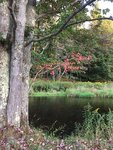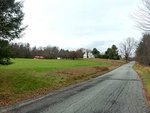 Narrowsburg
NarrowsburgLight Rain Fog/Mist, 43°
Wind: 8.1 mph
 Narrowsburg
NarrowsburgThe Upper Delaware River region experienced excessive damage to and loss of many trees during intense winter storms that delivered heavy snow and powerful winds during the final weeks of winter. …
Stay informed about your community and support local independent journalism.
Subscribe to The River Reporter today. click here
This item is available in full to subscribers.
Please log in to continue |


The Upper Delaware River region experienced excessive damage to and loss of many trees during intense winter storms that delivered heavy snow and powerful winds during the final weeks of winter. Evidence of those impacts can still be seen in Pennsylvania’s Pike and Wayne counties, and in Sullivan County, New York.
Trees and forested landscapes are important factors in the quality of our region’s water and air. Trees provide vast benefits, many of which go unnoticed and are undervalued. Besides supplying oxygen and purifying our air and water, trees reduce flooding, provide shade, increase property value, create vital habitat for countless bird, animal and insect species and much more.
Last week, in Pennsylvania, the Keystone Ten Million Trees Partnership launched, with a goal of planting ten million trees by 2025. The project centers around a commitment to reduce water pollution by restoring tree populations and is a collaborative effort of national, regional, state and local agencies along with conservation organizations, outdoors enthusiasts, businesses and ordinary citizens. (Visit www.tenmilliontrees.org to learn more or call 717/234-5550 to become a partner or schedule a tree planting.)
Meanwhile, Pennsylvania’s Department of Conservation and Natural Resources (DCNR) has spent the past year in a “rigorous process” in which staff members from across the agency’s bureaus worked to prioritize the department’s greatest climate change vulnerabilities and identify strategies to address them. Their primary conclusion? “Trees are the answer!” as shared in a recent post on DCNR’s “Good Natured Blog.”
The agency has specified that planting trees, especially along streams and other waterways, will be an important part of the solution. “DCNR is leading the effort to protect and restore buffers along streams (known as riparian areas) to control storm water, and also to keep the water cool for fish, filter pollutants from the land, and provide habitat for wildlife.”
Plant a tree today!
Comments
No comments on this item Please log in to comment by clicking here